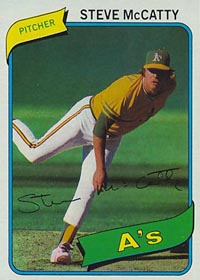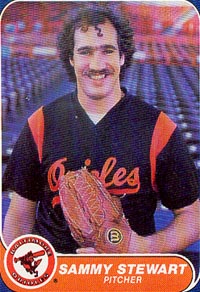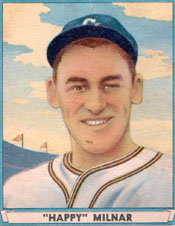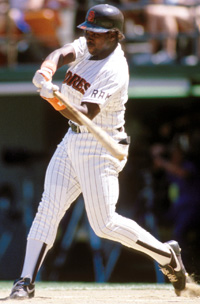|
CONTENTS
Five Shutouts vs One Team
Baseball to Bassist
Nearly Beat VanderMeer to the Punch
Best Two-Strike Hitter
Worst Pitching Staff Ever
Who Won the ERA Crown?
One Game Pitchers
One Game Batters
Three-Pitch Inning
First Game Called by Darkness; Let's Play Two
Odd Baseball Facts - I
Odd Baseball Facts - II
Odd Baseball Facts - III
Odd Baseball Facts - V
Odd Baseball Facts - VI
Odd Baseball Facts - VII
Odd Baseball Facts - VIII
Odd Baseball Facts - IX
Baseball Magazine
Golden Rankings Home
Top of Page
|
Odd Baseball
Facts Archive – IV
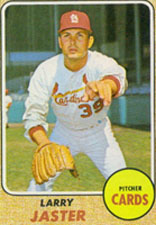
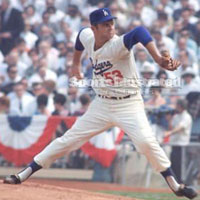
Don Drysdale
|
Five Shutouts vs One Team
In 1966, Cardinals P Larry Jaster faced the NL Champion Los Angeles Dodgers five times and shut them out each time.
- The five shutouts, which led the NL, were the only ones he threw all season.
- He had only one more complete game for a total of six.
- After going 3-0 with a 1.61 ERA in 1965, Larry still qualified as a rookie the following season. He went 11-5 with a 3.26 ERA and finished fourth in the 1966 Rookie of the Year voting.
His shutouts started early in the season and ended late.
- He beat the Dodgers 2-0 on April 25 in Chavez Ravine. He allowed seven hits in besting Claude Osteen.
- Jaster duplicated the feat on July 3, winning 2-0 again in LA on a three-hitter. Don Drysdale took the loss.
- On July 29, Larry bested LA 4-0 at Busch Stadium on a five-hitter. Drysdale was again the LP.
- August 19 Jaster beat Osteen again, 4-0 in California. He again surrendered only five hits.
- Finally, September 28 brought the final shutout, 2-0 over Don Sutton in St. Louis. LA got only four hits.
- So the Dodgers garnered only 24 hits in the five games.
Jaster won only 19 more games, with only two more shutouts.
- The Cardinals exposed the southpaw in the 1968 expansion draft, resulting in his selection by the Montreal Expos.
- He threw the first pitch in Expos history as their opening day starter. However, he went only 1-6 in '69.
- After the season, he was traded to Atlanta but appeared in only 19 games for the Braves before his MLB career ended after the '72 season.
|
John Neves played one season of minor league baseball for the Fargo-Moorhead Twins in the Class C Northern League. He wore a strange numeral on his uniform – a backwards 7. To understand why, just look at his last name. After hitting only .240 in 121 games, John ended his brief pro career.
The franchise was odd in that Fargo is in North Dakota while Moorhead is just across the border in Minnesota. However, the team played all its home games in Fargo.
Neves had also played C in football and G in basketball at East Boston High School. He had an interesting life after baseball, carving out a respected career as a jazz bassist. He played with, among many others, the Bobby Scott Trio and the immortal blind pianist George Shearing. John's playing is preserved on numerous jazz albums. When he died in 1988, tributes flowed in for "one of the great bass players."
|
|
Nearly Beat VanderMeer to the Punch
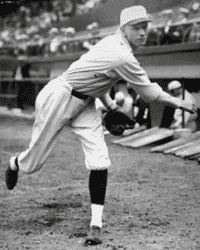
Howard Ehmke |
Howard Ehmke is famous for his unexpected performance in the 1929 World Series. However, six years earlier, he nearly performed a feat that Johnny VanderMeer accomplished 15 years later.
- On September 7, 1923, Ehmke threw a no-hitter for the Boston Red Sox at Shibe Park against the Philadelphia Athletics. He had one lucky break in the seventh when opposing P Slim Harriss hit a double to right but was ruled out because he failed to touch first. In addition, a hard liner to LF was mishandled by Mike Menosky, who was charged with an error. The game was played in a snappy 1:34.
- Four days later at Yankee Stadium, New York leadoff man Whitey Witt smacked a grounder to 3B Howard Shanks. The ball bounced off Shanks' chest, and Witt was safe at first. Official scorer Fred Lieb scored it a single. Ehmke retired the next 27 batters in order. Lieb was criticized for not changing his call to an error, but AL president Ban Johnson upheld the ruling. This game took all of 1:45 before 18,000 fans. Babe Ruth went 0-for-3 with a strikeout.
- That year, Ehmke enjoyed the only 20-win season of his 15-year ML career. In 1924, he went 19-17 for the Bosox.
|
Since the 1988 season, STATS Inc has kept a record of batting performance on the two-strike counts. They discovered the average non-pitcher sees his batting average decline by about 28% when down to his last strike, which means that most players hit under .200 in those at-bats.
In the twenty years worth of data, there is only one player who has been a .300 hitter when down to his last strike, and no one else is even close. It's Hall of Famer Tony Gwynn.
- The data covers his last 14 seasons and nearly 70% of his career plate appearances. In over 2000 plate appearances where he was down to his last strike, Gwynn hit .302.
- That's miles ahead of the next best player, Ichiro Suzuki, who trails Gwynn by nearly 35 points, way back at .268.
- When Gwynn was having his worst seasons hitting with two strikes, he was still better than anyone else. If you split Gwynn's 14 seasons into his best and worst seasons, in the bottom seven seasons he hit .272, still 4 points better than Ichiro's overall 2-strike average.
- Gwynn's most amazing accomplishment came in the five-year span from 1993 to 1997. In that period, Gwynn hit an incredible .337 when he was down to his last strike. That two-strike average was only 8% less than his overall batting mark of .368.
- To emphasize even further how remarkable this was, consider: Gwynn had a higher batting average with two strikes on him during that five-year span than any other hitter achieved in all his at-bats! Mike Piazza came the closest, hitting .3367 in all his ABs.
- RELATED FACT: In 2009, Jacoby Ellsbury of the Red Sox hit 18 points higher after 0-2 counts (an MLB-best .319) than he did overall (.301).
|
|
Worst Pitching Staff Ever
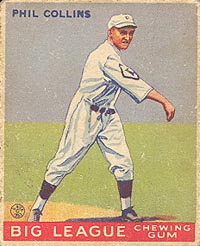
Collins led the Phillies in 1930 with
a 16-11 mark (4.78 ERA).

Burt Shotton, Phillies manager
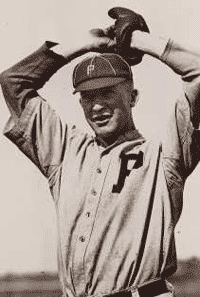
Grover Cleveland Alexander, who
returned to the Phils in 1930,
compiling an 0-3 record in 9 games
|
1930 was a hitters' paradise in both the NL and AL but especially the NL. While no one in authority had the balls to admit that the balls were juiced, the common wisdom was that they were manufactured differently that season. Then whatever was done to them for 1930 was undone for 1931 when averages returned to normal.
- Collectively, NL batters averaged .303, with six of the eight clubs averaging more than .300. (The league average dropped to .277 in 1931.)
- NL batters combined for 13,260 hits. The second-highest total in a modern eight-team league was 12,657 in the AL in 1936. That's a 603 hit difference!
- The 1930 New York Giants compiled a .319 batting average, another all-time high.
- The Philadelphia Phillies amassed the most hits ever recorded in a single season – 1,783.
Left behind in the wreckage of 1930 was undoubtedly the worst pitching staff in the history of modern baseball.
- The 1930 Phillies compiled a team ERA of 6.71. Opponents hit a collective .346 against them!
- Opponents scored double-digit runs 45 times. Nine times the Phils scored in double digits themselves and lost, including back-to-back July games in which they scored 15 runs only to fall to the Pirates 16-15 and the Cubs 19-15.
- Part of the reason for the onslaught was the Phils' home park, Baker Bowl. The 40' high RF fence was only 280' from home down the line. RCF was only 300'. A 15' wire screen topped the wall to cut down on HRs but did nothing to reduce easy doubles. But that doesn't excuse the road wallopings.
- The Phils, managed by Burt Shotton, finished 52-102, seven games behind the 7th-place Cincinnati Reds.
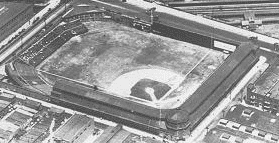 Baker Bowl
More quirks from that season:
- The Phillies finished with a 17-60 record on the road. That was the third time in four seasons that they had that exact road mark.
- On September 23, the Phils hosted the first-place Cardinals. Connie Mack and his Athletics, enjoying an offday, came to Baker Bowl to scout St. Louis. They saw the visitors win 19-16. The 19 runs were more than the Cards would score in all six games of the ensuing World Series against the A's.
But the most amazing fact about Phillies pitching in that era is this.
1930 was part of a string of 23 straight seasons in which Philadelphia pitchers led the league in allowing the most runs per game.
No other franchise has ever had that dubious distinction more than four years in a row. But the Phillies did it from 1918, the year after they traded 30-game winner Grover Cleveland Alexander to the Cubs ("The Curse of Old Pete"), through 1939.
|
Reference: "Modern Baseball's Greatest-Hitting Team," Tom Ruane, The Baseball Research Journal, Fall 2009
Top of Page |
The 1981 season was shortened because of a player strike. With the number of innings required to qualify lowered drastically, the top two hurlers in the AL ERA standings finished like this.
|
| Pitcher |
Team |
IP |
ER |
ERA |
| Steve McCatty |
Oakland |
185 2/3 |
48 |
2.326 |
| Sammy Stewart |
Baltimore |
112 1/3 |
29 |
2.323 |
Since Stewart's ERA was 2.323 and Steve McCatty's was 2.326, Stewart was awarded the title, right?
Nope, McCatty was named the ERA champion. Here's why.
- When figuring the ERA, partial innings were rounded to the nearest whole number.
- So McCatty's innings were rounded up to 186 while Stewart's went down to 112.
- Recalculating with those figures causes Steve's ERA to go down slightly and Sammy's to rise.
McCatty 2.323 Stewart 2.330
The rule was changed shortly after this anomaly occurred.
|
|
Reference: Rob Neyer's Big Book of Baseball Blunders, Rob Neyer
Top of Page
Over 600 players share the distinction of having appeared in exactly one major league game. Among those hundreds are some interesting tidbits. In this edition, we'll deal with one-game hurlers. Next time, one-and-done batters.
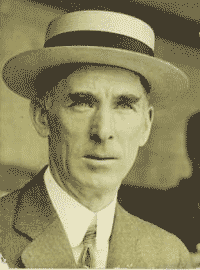
Connie Mack |
By coincidence, all the items below involve pitchers for Connie Mack's Philadelphia Athletics.
- On the last day of the 1909 season, John Kull (born John Kolonauski) pitched the last three innings of the first game of a DH against Washington. Kull allowed one run but was the winning pitcher. He also went 1-for-1 at the plate, driving in two runs. So his ML stats shows a 1.000 winning percentage and a 1.000 batting average. Furthermore, the losing pitcher in his victory was none other than Walter Johnson!
- On September 15, 1921, southpaw Arliss Taylor started for Philadelphia against the Cleveland Indians. He pitched two innings, giving up 7 hits. He fanned only one batter but what a batter it was: SS Joe Sewell, statistically the toughest hitter to strike out in baseball history.
- Two years later, September 5, 1923, Mack sent Hank Hulvey to the mound against the New York Yankees. Hank pitched 7 innings and was never heard from again. But that single appearance was enough to put him on the list of pitchers who gave up HRs to Babe Ruth – the Bambino's 230th career round-tripper in this case.
|
Reference: "A Short Cup of Coffee," Leon Uzarowski, Baseball Research Journal, 1976
Top of Page
The previous installment (above) of this series dealt with pitchers who appeared in only one ML game. Now we consider some interesting facts about one game position players.
- The most famous one-game batter was Eddie Gaedel. He was a 3'7" 65 lb midget hired by St. Louis Browns owner Bill Veeck for $100 to attract attention and boost attendance. Eddie came to the plate as a PH as the leadoff hitter in the first inning of the second game of a DH on August 19, 1951, against the Detroit Tigers. He wore a special uniform with number 1/8. (The jersey hangs in the HOF.) Under orders from Veeck not to take the bat off his shoulder, Eddie walked on four pitches from lefty Bob Cain and was removed for a PR. Any thoughts Veeck had of using Gaedel again ended when AL President Will Harridge voided Gaedel's contract the next day. (Read about the tragic ending to Gaedel's life.)
- 18-year-old John Paciorek played RF in the last game of the 1963 season for the Houston Colt 45s. He went three-for-three, all singles, with two walks, scoring four of the five times he reached base in the 13-4 romp over the equally hapless New York Mets. Gus Mancuso wrote in the Houston Press the next day: "Paciorek should be a cinch to make it as a big leaguer. He shows promise of becoming a great hitter. He swings the bat with authority and shows good speed in the OF and on the bases, too." However, Paciorek went back to the minors the next season. A back operation in 1964 caused him to miss the entire 1965 season and ended any hope of appearing in a ML game again. Of the 20 players with career batting averages of 1.000, Paciorek is the only one with as many as 3 AB. His younger brother Tom made it with the Dodgers in 1970 and had an 18-year career before becoming "Hawk" Harrelson's "Wimpy" sidekick on White Sox telecasts. (For a shocking revelation about Tom Paciorek, read the last paragraph of his Wikipedia article.) A third Paciorek brother, Jim, played 48 games for the 1987 Milwaukee Brewers.
- Many years before John Paciorek, 20-year-old Ray Jansen of the 1910 St. Louis Browns got 4 singles in 5 ABs. Since he never appeared in another game, his career batting average will forever stand at .800.
|
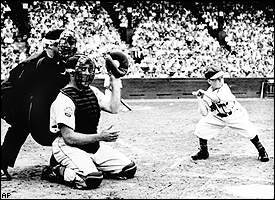 Eddie Gaedel
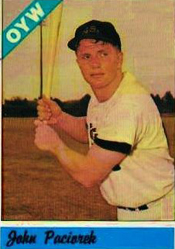
|
Reference: "A Short Cup of Coffee," Leon Uzarowski, Baseball Research Journal, 1976
Top of Page
|
|
Some baseball historians are attempting to compile a list of as many three-pitch innings as possible. One such occurrence was particularly interesting.
- August 20, 1979: With the Yankees pounding his Royals 17-3 heading into the 9th inning, Kansas City manager Whitey Herzog asked for a volunteer to get the last three outs. Utility IF Jerry Terrell, already in the game in place of George Brett at 3B, stepped up. In 11 seasons of pro ball, Jerry had never taken the mound in a game. Perhaps because the batters were swinging at anything to get the game over, Terrell retired the side on just three deliveries – two pop ups and a fly to CF. In the bottom of the ninth, Terrell took his turn at the plate and singled.
- The following season, 1980, Terrell got a chance to toe the slab again. He gave up a single and a walk but no runs. So his career record as a P shows two scoreless innings and 1-for-1 at the plate; that is, an ERA of 0.00 and a BA of 1.000.
Reference: "The Three-Pitch Inning," Craig R. Wright, BaseballsPast.com
Top of Page |
First Game Called by Darkness; Let's Play Two!
|
|
A strange rule created an interesting doubleheader on August 11, 1942, in Cleveland's Municipal Stadium.
- The Detroit Tigers and the Indians played 14 innings of scoreless baseball.
- Both starters pitched the entire contest. Southpaw Al Milnar of the Indians surrendered only two hits while veteran Tommy Bridges gave up nine to the home team. Milnar came within one out of throwing a nine-inning no-hitter. Roger Cramer singled to right with two outs in the ninth to disappoint the crowd of 13,118.
- Even with five extra innings, the game was completed in 2:27.
- The umpires called the game due of darkness because, in those early years of night baseball, the rules prohibited a day game from being finished under the lights.
- So a few minutes after the teams left for the clubhouse, the lights were turned on, and the field prepared for the nightcap.
- The Tigers won the second game 3-2 in an even two hours as Dizzy Trout outdueled Mel Harder.
|
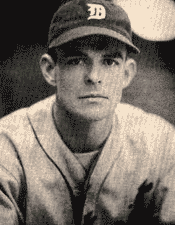
Tommy Bridges |
|
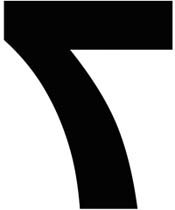


 Baker Bowl
Baker Bowl